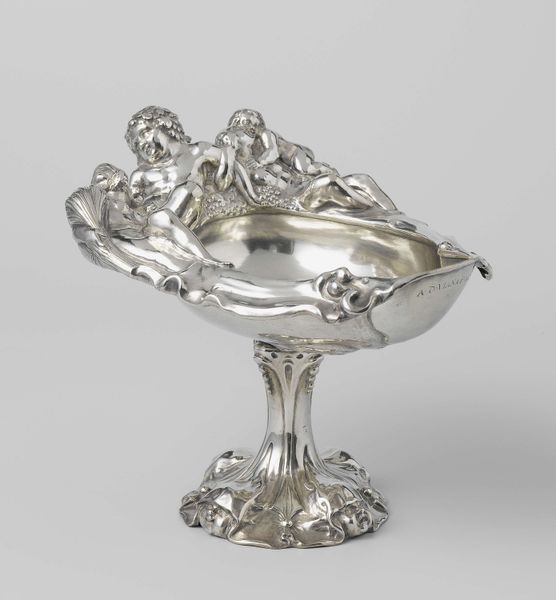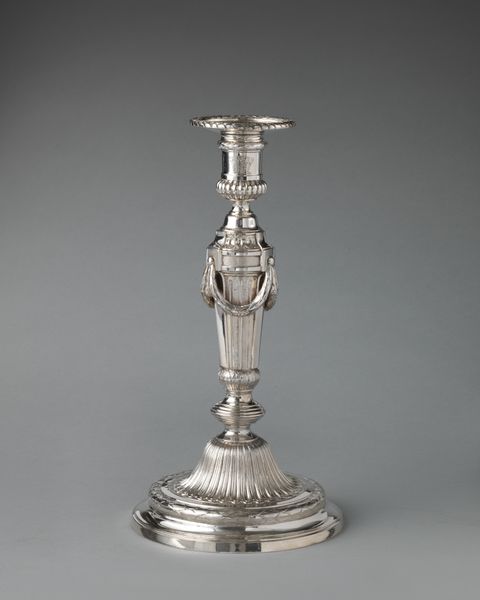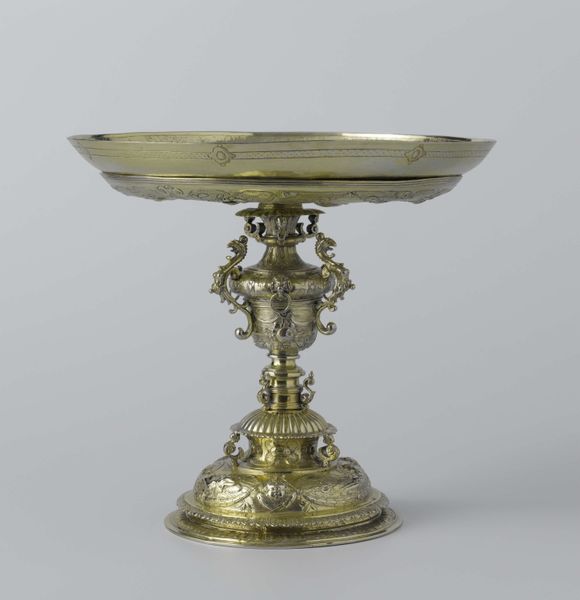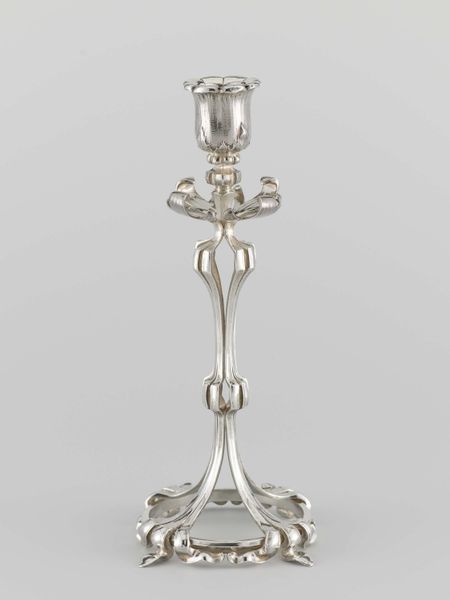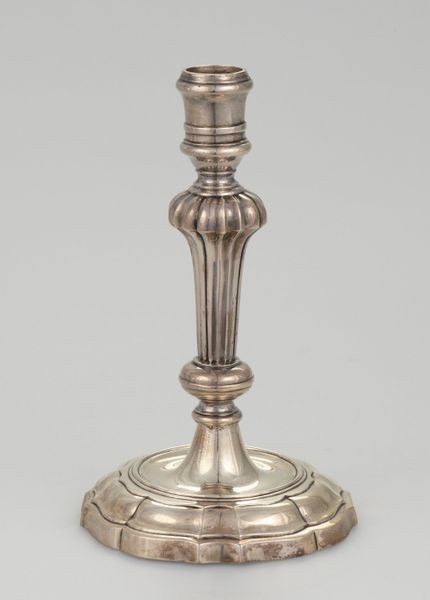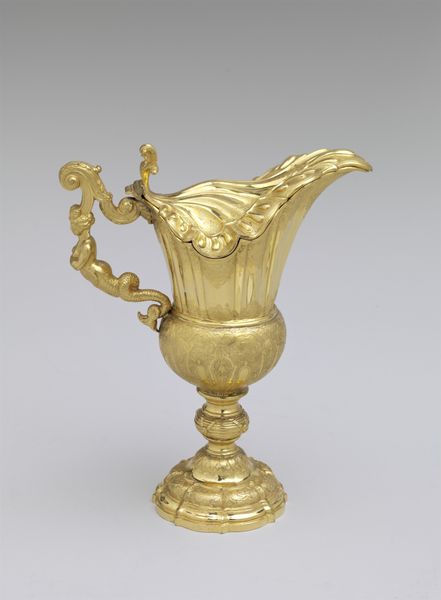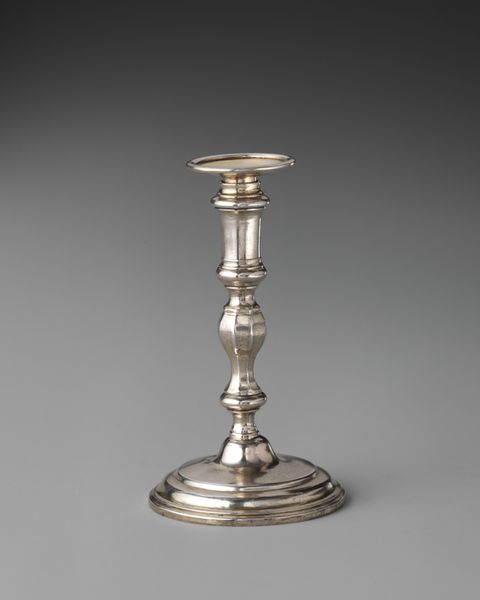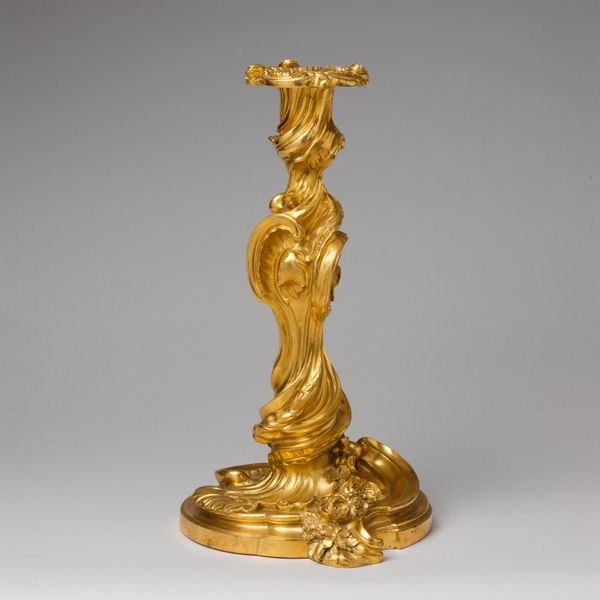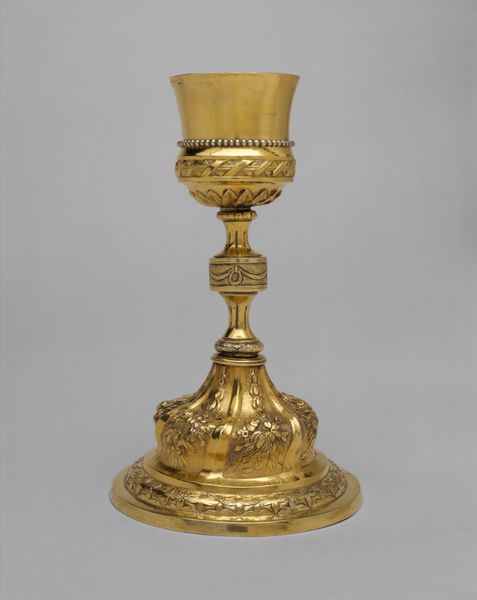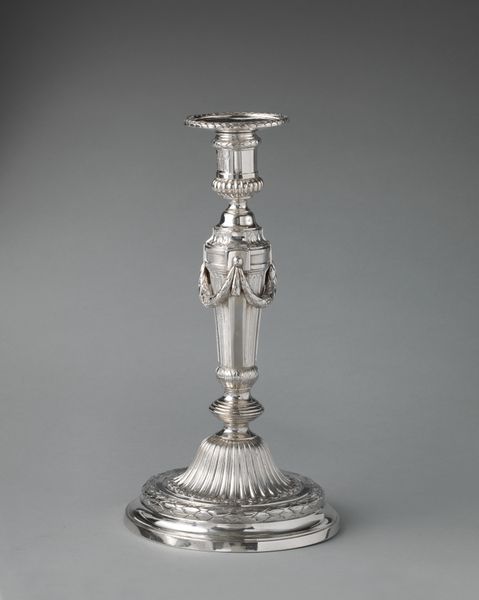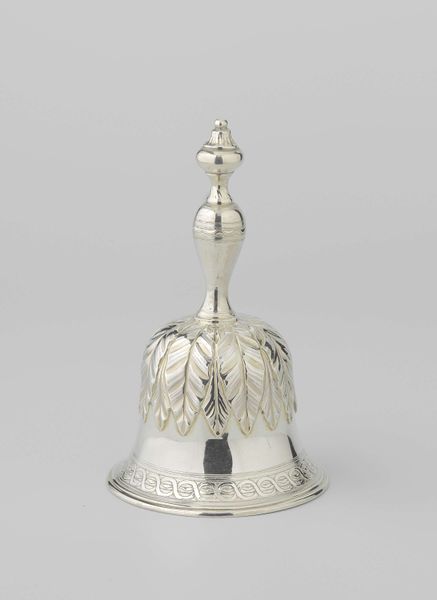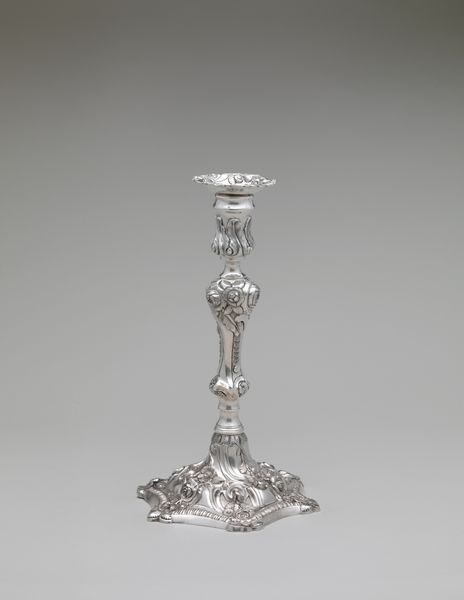
Dimensions: height 5.2 cm, diameter 2.9 cm, weight 13 gr
Copyright: Rijks Museum: Open Domain
Curator: Let's turn our attention to this brass candleholder, or "Kandelaar," created in 1781 by Jan Bonket. What's your immediate reaction? Editor: Well, it's striking. The material gleams, and I’m immediately drawn to that spiral shaft, its texture promises a certain cool smoothness against the fingers. I am fascinated by the baroque period in decorative arts. Curator: Indeed. Baroque art often uses a spiraling structure like this one, symbolizing transformation and the connection between the earthly and spiritual realms. The rising smoke could also suggest this idea of connection. The shape itself, the spiral, implies growth, ascent. Editor: Fascinating how the maker chose brass. It wasn't simply about aesthetics; brass possesses a specific thermal capacity. Candle holders are more than just holders; they are practical. It tells us something about middle-class rituals, and, even more, how people saw artificial light. What did brass, as opposed to, say, iron, tell its users about light and warmth? Curator: The choice of brass would definitely carry weight, culturally. Its golden hue mimicked more precious metals, reflecting aspirations and social status. Light, especially artificial light, was luxury, literally worth more than gold, given the cost of making even something like this candlestick. The radiant, reflected light could then symbolize hope, knowledge, even divine presence. Editor: That touches on how art history sometimes distinguishes "decorative art" from fine art. This distinction falls apart when you start asking production questions, and tracing trade and manufacture of these metal works, though. Think of the labour involved: mining, smelting, casting. This object’s beauty stems directly from a whole range of industrial processes that connect people across history. Curator: Exactly. Its beauty speaks to that larger network of makers, resources, and belief systems that shape our material world and what that world comes to mean. So it acts like a tangible memory device that stores and reflects back meaning. Editor: Seeing the piece this way transforms it. This candle holder is an actor in history! It shapes perceptions of light and class through material processes, rather than some pure aesthetic ideal. Curator: I agree. The interplay of symbolism, the glow, and material conditions reminds us of art's capacity to mirror both the practicalities and ideals of a particular moment. Editor: Yes, by attending to how objects like these were actually produced and circulated, it invites us to re-examine what objects communicate.
Comments
No comments
Be the first to comment and join the conversation on the ultimate creative platform.
